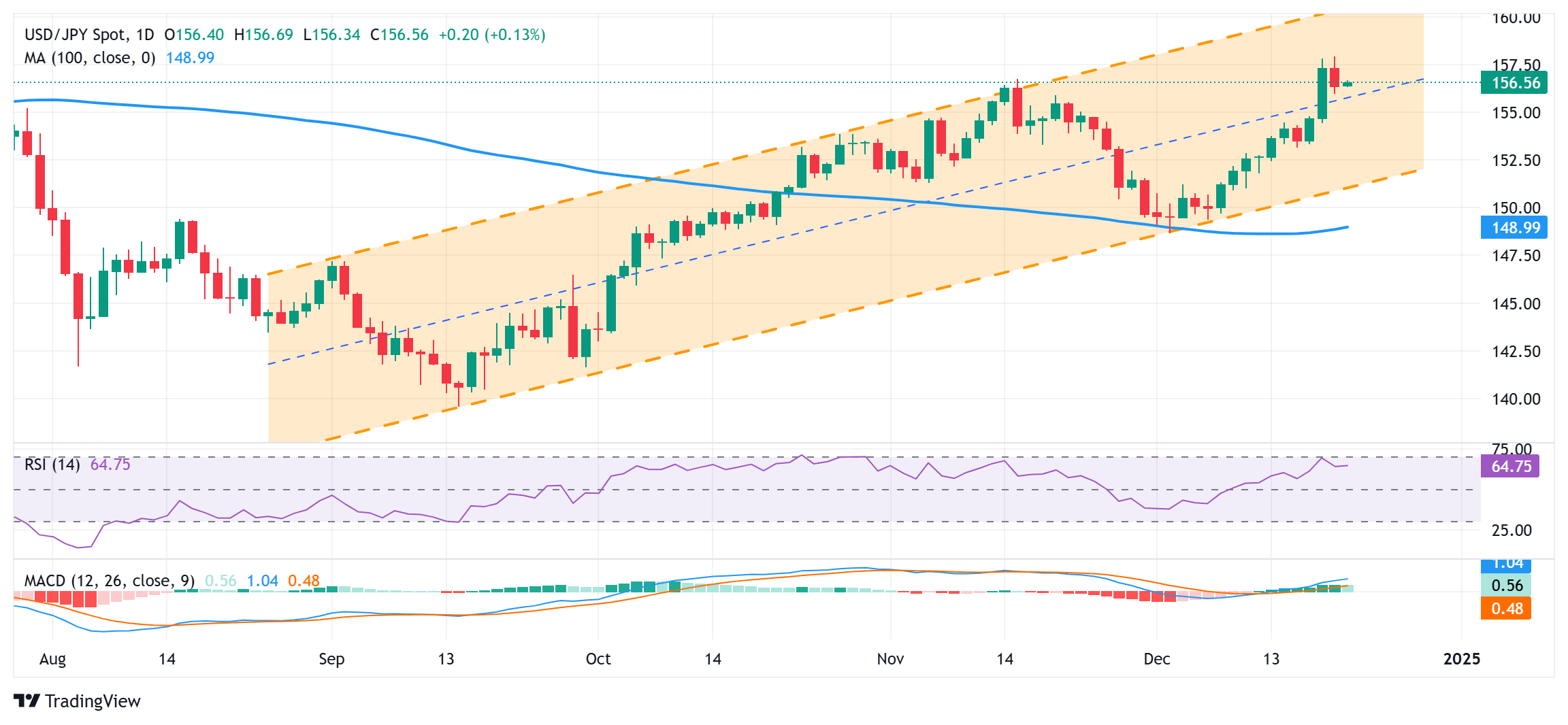- The Japanese Yen struggles to capitalize on Friday’s modest restoration beneficial properties in opposition to the US Greenback.
- Doubts over BoJ’s charge hike plan, and the widening of the US-Japan yield differential, weigh on the JPY.
- Merchants now look to the US Shopper Confidence Index for short-term impetus later this Monday.
The Japanese Yen (JPY) edges decrease in opposition to its American counterpart at first of a brand new week and erodes part of Friday’s goodish restoration beneficial properties from a five-month low. Traders stay sceptical in regards to the Financial institution of Japan’s (BoJ) intentions to hike rates of interest additional, which, together with a usually optimistic threat tone, undermines the safe-haven JPY. Other than this, the latest widening of the US-Japan yield differential, bolstered by the Federal Reserve’s (Fed) hawkish shift, seems to be one other issue weighing on the lower-yielding JPY.
That mentioned, sturdy inflation knowledge launched from Japan on Friday left the door open for a possible BoJ charge hike in January or March. Other than this, persistent geopolitical dangers stemming from the protracted Russia-Ukraine warfare and tensions within the Center East, together with commerce warfare fears, would possibly help the JPY. Bears would possibly additional chorus from putting aggressive bets amid speculations that Japanese authorities would possibly intervene to prop up the home foreign money, which, together with subdued US Greenback (USD) worth motion, would possibly cap the USD/JPY pair.
Japanese Yen bears have the higher hand amid lack of readability in regards to the timing of subsequent BoJ charge hike
- The Financial institution of Japan final week determined to maintain the short-term charge goal unchanged on the finish of the December coverage assembly and provided few clues on how quickly it may push up borrowing prices.
- Japanese authorities bond yields dropped to the bottom in a month on Friday in response to BoJ Governor Kazuo Ueda’s dovish indicators and a really cautious tone on additional financial coverage tightening.
- The benchmark 10-year US authorities bond yield rose to its highest stage in additional than six months final week and the resultant widening of the US-Japan yield differential undermines the Japanese Yen.
- A authorities report confirmed on Friday that Japan’s Nationwide Shopper Worth Index (CPI) rose greater than anticipated in November, which bodes effectively with additional BoJ rate of interest hikes in early 2025.
- The US Greenback retreated from a two-year excessive on Friday after the Private Consumption Expenditure (PCE) Worth Index pointed to indicators of inflation moderation and lingering challenges for the financial system.
- In accordance with a report printed by the US Bureau of Financial Evaluation (BEA), the PCE Worth Index edged larger to 2.4% on a yearly foundation in November from 2.3% within the earlier month.
- The core gauge, which excludes unstable meals and vitality costs, rose 2.8% in the course of the reported interval, matching October’s studying however arriving beneath the market expectation of two.9%.
- Extra particulars of the report revealed that Private Revenue grew 0.3% in November, which marked a pointy deceleration relative to the outsized 0.7% enhance recorded in October.
- In the meantime, Shopper Spending, which accounts for greater than two-thirds of US financial exercise, climbed 0.4% final month after a downwardly revised studying of 0.3% in October.
- Traders now sit up for the discharge of the Convention Board’s US Shopper Confidence Index for short-term buying and selling alternatives on the primary day of a holiday-shortened week.
USD/JPY any additional transfer up is more likely to confront some resistance close to the 157.00 round-figure mark

From a technical perspective, Friday’s low, across the 156.00-155.95 space, now appears to guard the quick draw back. Any additional decline is perhaps seen as a shopping for alternative close to the 155.50 horizontal zone. This subsequent related help is pegged close to the 155.00 psychological mark, which if damaged decisively, would possibly shift the near-term bias in favor of bearish merchants and make the USD/JPY pair weak to weaken additional.
On the opposite finish, the 157.00 spherical determine now appears to behave as an instantaneous hurdle forward of the 157.40-157.45 area and the multi-month peak, across the 157.90 space touched on Friday. Some follow-through shopping for past the 158.00 mark shall be seen as a contemporary set off for bullish merchants amid optimistic oscillators on the each day chart. The USD/JPY pair would possibly then climb to the 158.45 intermediate hurdle earlier than aiming to reclaim the 159.00 mark.
Financial institution of Japan FAQs
The Financial institution of Japan (BoJ) is the Japanese central financial institution, which units financial coverage within the nation. Its mandate is to problem banknotes and perform foreign money and financial management to make sure worth stability, which implies an inflation goal of round 2%.
The Financial institution of Japan embarked in an ultra-loose financial coverage in 2013 in an effort to stimulate the financial system and gas inflation amid a low-inflationary atmosphere. The financial institution’s coverage relies on Quantitative and Qualitative Easing (QQE), or printing notes to purchase belongings equivalent to authorities or company bonds to supply liquidity. In 2016, the financial institution doubled down on its technique and additional loosened coverage by first introducing unfavourable rates of interest after which straight controlling the yield of its 10-year authorities bonds. In March 2024, the BoJ lifted rates of interest, successfully retreating from the ultra-loose financial coverage stance.
The Financial institution’s large stimulus triggered the Yen to depreciate in opposition to its predominant foreign money friends. This course of exacerbated in 2022 and 2023 attributable to an rising coverage divergence between the Financial institution of Japan and different predominant central banks, which opted to extend rates of interest sharply to struggle decades-high ranges of inflation. The BoJ’s coverage led to a widening differential with different currencies, dragging down the worth of the Yen. This pattern partly reversed in 2024, when the BoJ determined to desert its ultra-loose coverage stance.
A weaker Yen and the spike in world vitality costs led to a rise in Japanese inflation, which exceeded the BoJ’s 2% goal. The prospect of rising salaries within the nation – a key component fuelling inflation – additionally contributed to the transfer.
